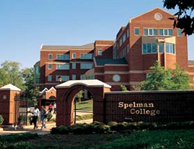Warning: in_array() [function.in-array]: Wrong datatype for second argument in /home/african/public_html/wp-content/plugins/yet-another-related-posts-plugin/classes/YARPP_Core.php on line 1009
Warning: in_array() [function.in-array]: Wrong datatype for second argument in /home/african/public_html/wp-content/plugins/yet-another-related-posts-plugin/classes/YARPP_Core.php on line 1009
Warning: in_array() [function.in-array]: Wrong datatype for second argument in /home/african/public_html/wp-content/plugins/yet-another-related-posts-plugin/classes/YARPP_Core.php on line 1009
Warning: in_array() [function.in-array]: Wrong datatype for second argument in /home/african/public_html/wp-content/plugins/yet-another-related-posts-plugin/classes/YARPP_Core.php on line 1009
Warning: in_array() [function.in-array]: Wrong datatype for second argument in /home/african/public_html/wp-content/plugins/yet-another-related-posts-plugin/classes/YARPP_Core.php on line 1009
Warning: in_array() [function.in-array]: Wrong datatype for second argument in /home/african/public_html/wp-content/plugins/yet-another-related-posts-plugin/classes/YARPP_Core.php on line 1009
 On April 11, 1881, the first classes of what was to become Spelman College were held in the basement of an Atlanta church. Originally the college was called the Atlanta Baptist Female Seminary.
On April 11, 1881, the first classes of what was to become Spelman College were held in the basement of an Atlanta church. Originally the college was called the Atlanta Baptist Female Seminary.
It was sponsored by the American Baptist Women’s Home Mission Society. Spelman ultimately became the nation’s African-American women’s premiere educational institution. U.S. News and World Report has ranked the school among top liberal arts institutions. Spelman Seminary is part of the Atlanta University Center complex. Forbes magazine listed the country’s best colleges for women and placed Spelman in the top 10. John D. Rockefeller’s family gave substantial support to the college. The oldest campus building was built with money donated by the Rockefeller family.
Among colleges and universities that produce Fulbright Scholars, Spelman ranks in the top 50. It produces the second largest number of African-American graduates who go on to medical school. There are some prestigious alumni of the college. The list includes Children Defense Fund founder, Marion Wright Edelman; opera singer, Mattiwilda Dobbs; Alice Walker, Pulitzer Prize-winning novelist; and actress Esther Rolle.
The first two teachers of the Atlanta Baptist Female Seminary were Sophia B. Packard and Harriet E. Guiles. The two met when Ms. Packard was the New Salem Academy preceptress, and Ms. Giles was a student there. They became lifelong friends. Together they traveled to Atlanta for the specific purpose of founding a school for black women. Friendship Baptist Church pastor, Frank Quarles, was very supportive.
There were 11 African-American women in the first class. The founders had been given $100 from the Medford, Massachusetts First Baptist Church. They also had a promise of future support from a group they were affiliated with in Boston. The group was the Women’s American Baptist Home Missionary Society. Though many of their first students were illiterate, the vision the women had for the school’s curriculum included evidences of Christianity, moral philosophy, zoology, astronomy, Constitution of the United States, botany, chemistry, psychology (then called mental philosophy), political economy, geometry, rhetoric, Latin essay, physiology, and algebra. More students were attracted to the seminary. By the end of the first term, the enrollment had increased to 80 students. The missionary society made a down payment for a site in Atlanta that was near the church where the school began. It was a nine-acre plot having five buildings to be used as classrooms and a residence hall.
The two founders went to Massachusetts in 1882 to bid for revenue. That is where they met the wealthy businessman, John D. Rockefeller. He was particularly impressed with the vision that Ms. Packard held for the school. The school grew quickly. In 1884, there were 16 faculty members and 600 students. That was also the year Rockefeller visited the school. Atlanta’s black community’s generous donations were helping the school survive. Teachers were volunteering and supplies were being donated. Black community groups, philanthropists, and many of Atlanta’s black churches donated and raised money to settle the property debt that remained. Mr. Rockefeller, being impressed with their efforts, settled the property debt for them. Rockefeller’s wife and in-laws were also supporters of the school. Rockefeller’s wife’s family name was Spelman. The Spelmans were long time abolition activists. In appreciation of their support, the name of the school was renamed to the Spelman Seminary in 1924.
Spelman College founded in 1881, has undergone many changes over the years. Over 2100 students comprise today’s student body. Fifteen foreign countries and 41 states are represented. Spelman continues to inspire commitment through service to bring about positive social change. The school is dedicated to leadership development. Intellect, creativity, and ethics are fostered. Students gain academic excellence in the sciences and liberal arts.

No comments yet.